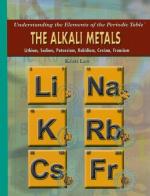|
This section contains 237 words (approx. 1 page at 300 words per page) |
Cesium is an alkali metal element denoted by the atomic symbol Cs. It has an atomic number of 55 and an atomic weight of 132.91. It is a very soft, white metal which is not particularly abundant in nature. It is typically found as a compound such as pollucite. In its pure form, it is the most reactive alkali metal. Cesium reacts violently with both liquid water and ice, and even moist air is often sufficient to ignite the metal. For safety, it must be transported and stored in kerosene, with which it does not react.
A very rare alkali metal, cesium was one of the first new elements discovered using the spectroscopic methods perfected by Robert Bunsen and Gustav Kirchhoff in 1860. These two German scientists had developed a method by which elements could be identified by examining the spectral lines produced when the element was heated or burned. After recording the spectra of all known elements, they soon discovered new spectral "fingerprints" belonging to previously unknown elements. One of these they named caesium from the Latin word for "sky blue" (after the blue color of its spectral lines).
Cesium is used mainly in photoelectric cells, but is also a component in radio tubes, military infrared lamps, and video equipment. In the 1940s, the American scientist Norman F. Ramsey, Jr. (1915-) designed an atomic clock whose phenomenal accuracy is based upon the precise frequencies within cesium atoms.
|
This section contains 237 words (approx. 1 page at 300 words per page) |


